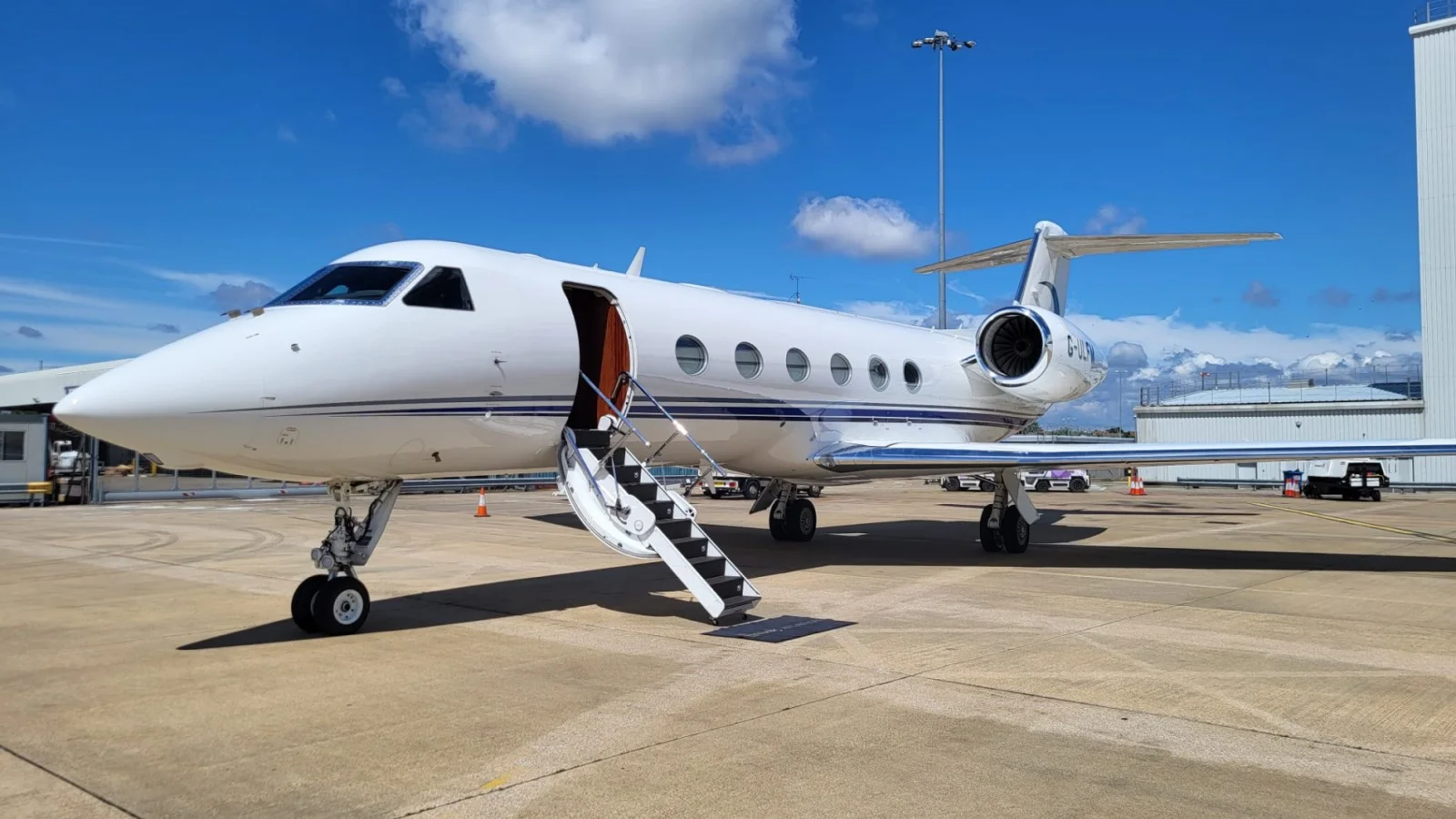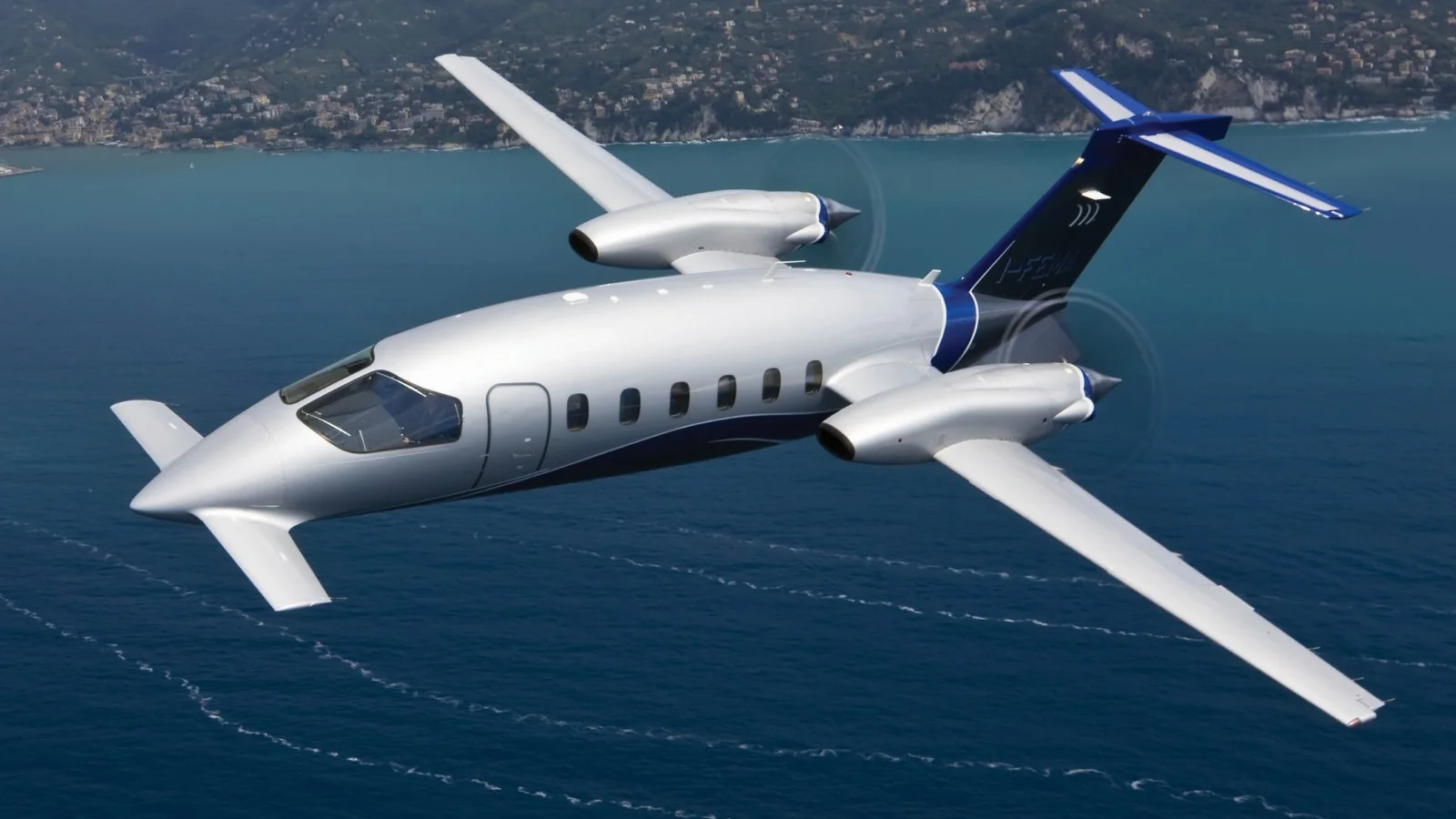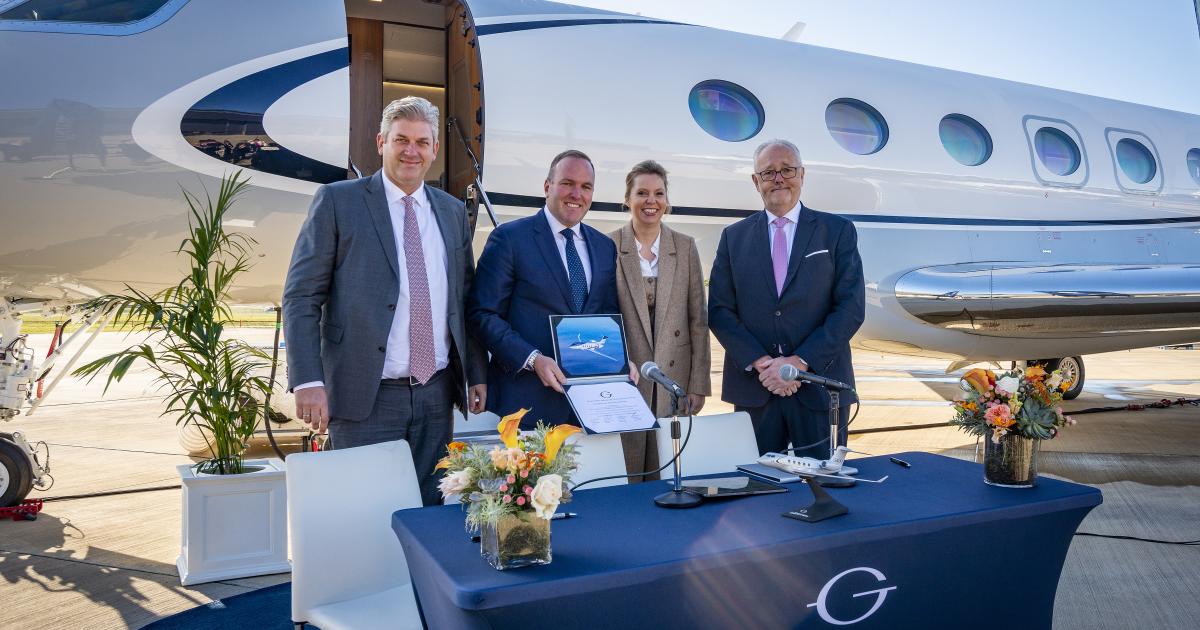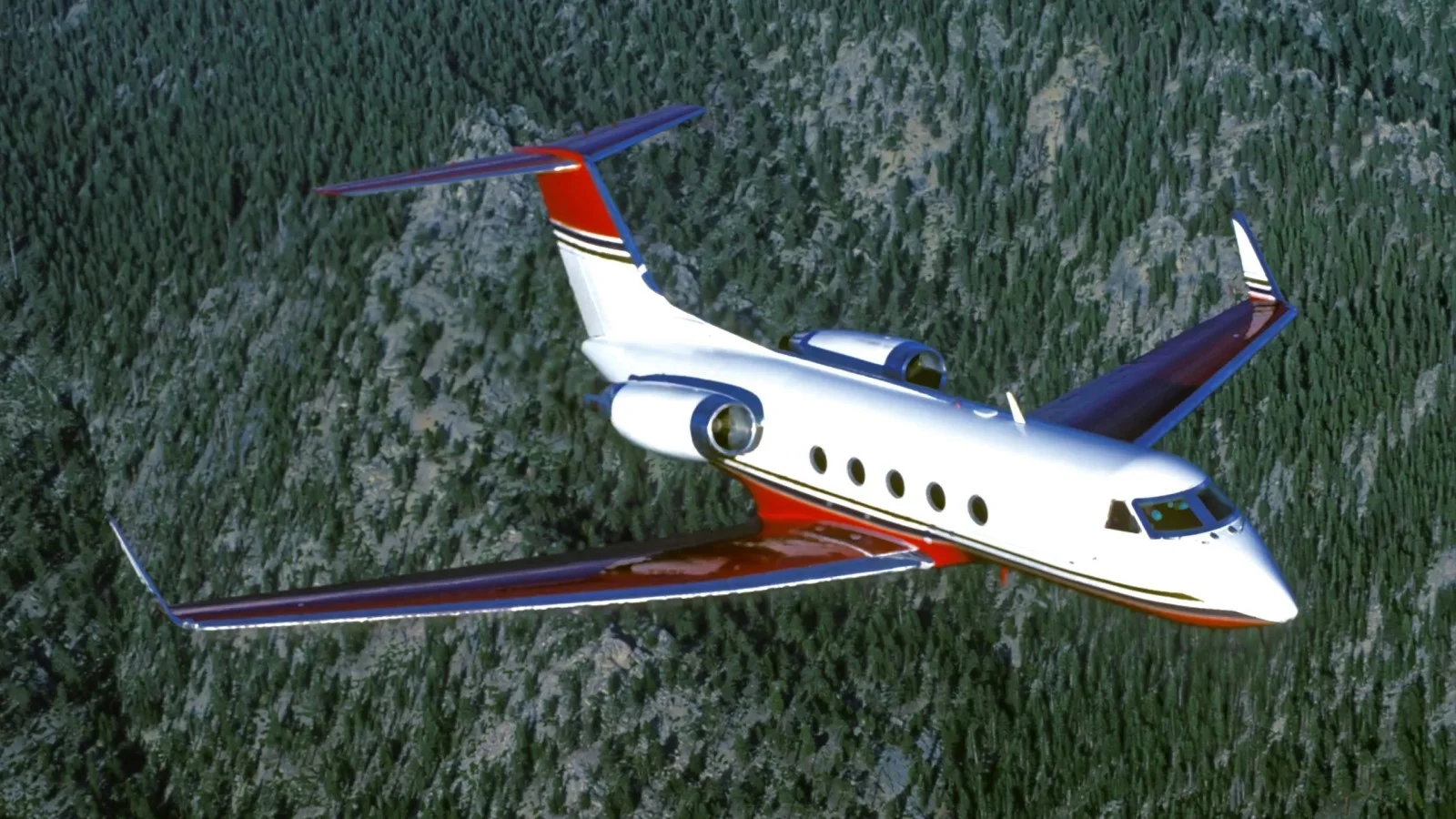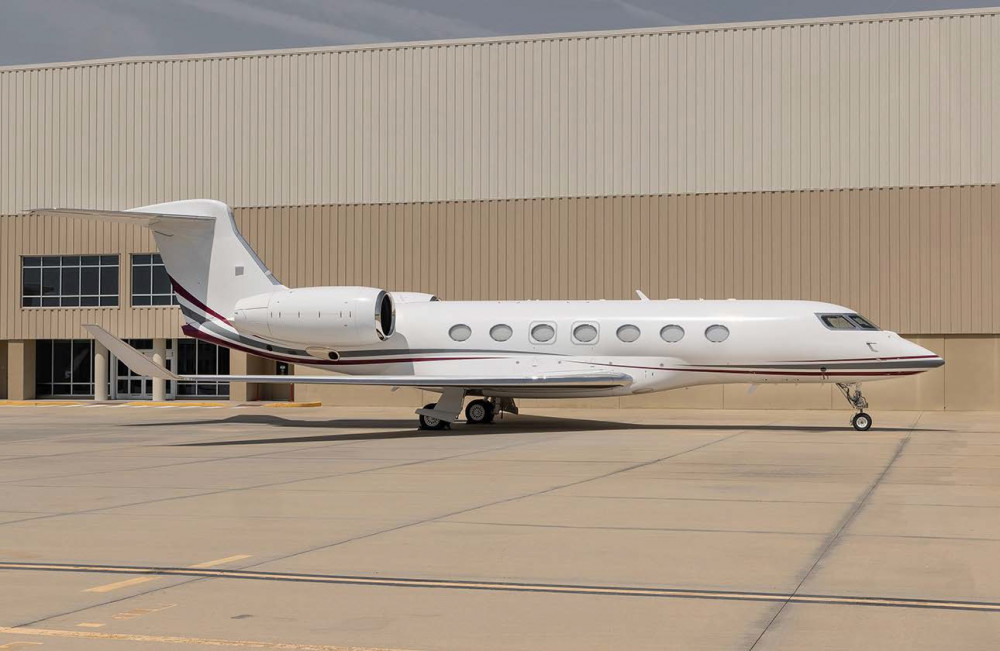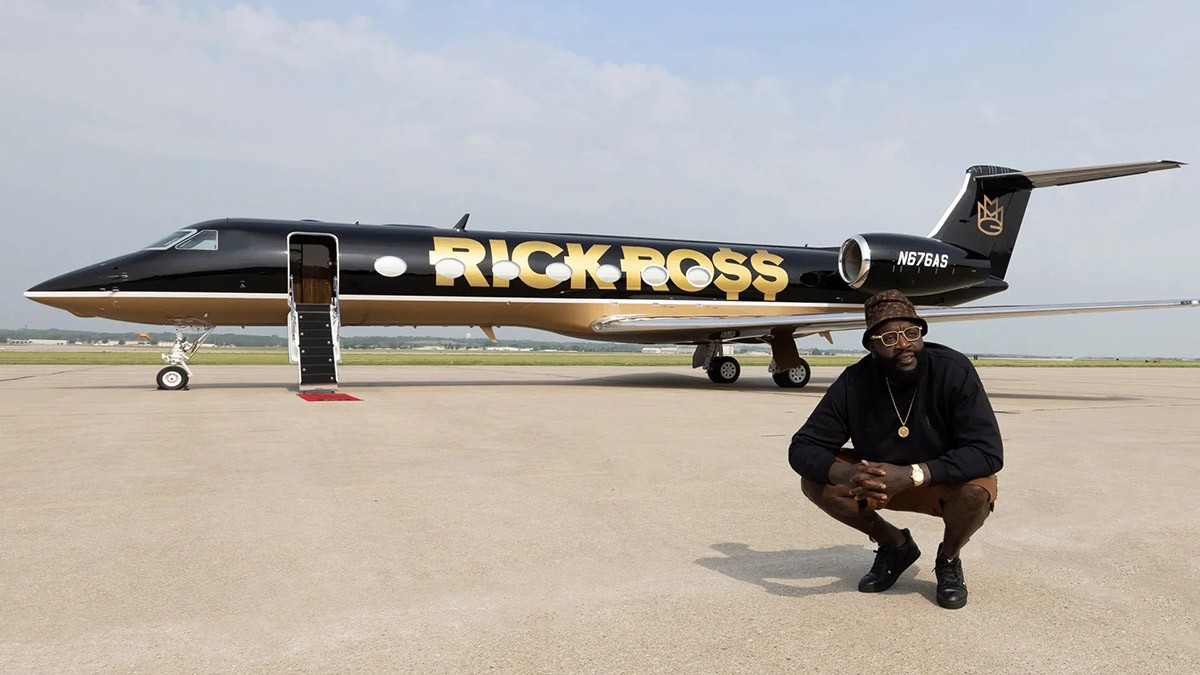Review of Bombardier Global 7500 : Ultra long range jet
7 min read
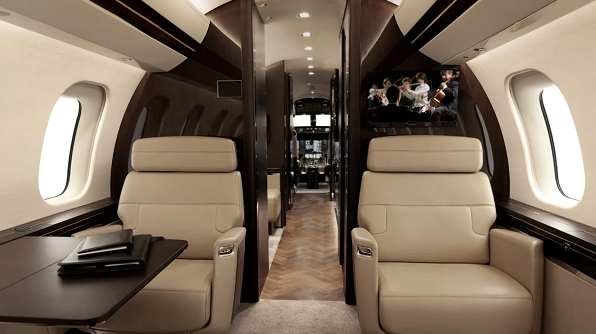
A Review of Bombardier Global 7500
When Bombardier introduced the Global 7500, the company wasn’t just updating its business jet lineup; it was aiming to redefine what ultra-long-range private travel could look like. Positioned at the pinnacle of the market, the Global 7500 combines staggering range, remarkable cabin space, and cutting-edge avionics into a package tailored for the world’s most demanding fliers. Since its service debut in December 2018, it’s become a symbol of business aviation excellence.
But beyond the luxury and performance numbers, does the jet truly justify its price and reputation?
History and Development
Originally announced in 2010 under the name Global 7000, the aircraft’s development reflected Bombardier’s ambition to outpace both its existing fleet and its competitors.

After its first flight in November 2016 and subsequent certification in 2018, it entered the market just in time to challenge Gulfstream’s stronghold in the ultra-long-range category. Since then, Bombardier has delivered over 200 aircraft by mid-2024, an impressive feat for a jet in such an elite segment.
The Global 7500 was designed from the ground up to travel farther, fly faster, and offer more living space than any other purpose-built business jet before it. On paper, its specifications look like a dream checklist for anyone who travels across continents regularly. In practice, it mostly delivers on those promises; at a significant cost.
Unmatched Performance and Range
One of the primary selling points of the Global 7500 is its range: a staggering 7,700 nautical miles.
That’s enough to fly nonstop from New York to Hong Kong, or from Los Angeles to Dubai, with fuel to spare. In fact, the aircraft once completed a flight from Singapore to Tucson, Arizona, covering 8,152 nautical miles; setting a record and still landing with 1.5 hours of fuel in reserve.
This performance is driven by a pair of GE Passport engines, each capable of delivering 18,920 pounds of thrust. These engines were developed specifically for this aircraft, and offer around 8% better fuel efficiency than those used on previous Bombardier models.
Cruising typically at Mach 0.85 but capable of sprinting to Mach 0.925, the Global 7500 is one of the fastest jets in its class. It’s not just fast in the air, it’s nimble on the ground too, capable of operating from challenging airports like London City thanks to its impressive short-field performance and steep approach certification.
A Cabin That Feels Like Home
But speed and range are only part of the story.
Where the Global 7500 really asserts itself is inside the cabin. Measuring 54 feet and 5 inches in length and more spacious than any of its rivals, the interior is divided into four distinct living zones.
offering a level of comfort more akin to a luxury apartment than an aircraft.
Typically configured for 14 to 19 passengers, the aircraft can also sleep up to eight in lie-flat comfort. The seats themselves, Bombardier’s proprietary “Nuage” design, are the result of seven years of development. Featuring deep recline, a zero-gravity position, and a tilting headrest, they’re arguably the most comfortable in business aviation today.
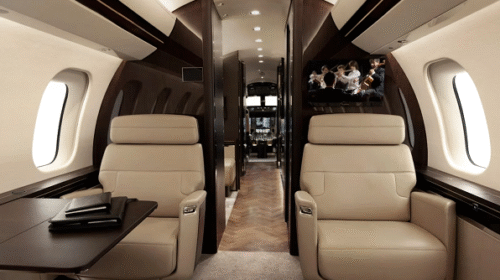
Every detail in the cabin seems designed to enhance passenger well-being. The windows are the largest in the segment, providing each seat with natural light and a view. The “Pũr Air” purification system keeps the cabin atmosphere fresh using HEPA filters and maintains a low cabin altitude of 2,900 feet at a cruising altitude of 41,000 feet—significantly improving how passengers feel on long-haul flights.
There’s even an available master suite with a permanent bed and a full-size shower, not to mention a crew rest area and in-flight access to the baggage hold.
Connectivity and Tech at Altitude
The Global 7500 isn’t just about physical comfort; it’s loaded with technology.
Its entertainment system, the “nice Touch” from Lufthansa Technik, includes a 40-inch 4K OLED screen, high-speed Wi-Fi via fiber-optic infrastructure, and multiple USB 3.0 and Bluetooth 4.0 interfaces. Business travelers can turn the cabin into a flying office, while others can stream media or video conferences without compromise.
Up front, pilots benefit from Bombardier’s Vision Flight Deck, one of the most advanced cockpits in private aviation. Featuring fly-by-wire controls, side-stick steering, and four large screens, the interface integrates Enhanced and Synthetic Vision Systems, a Head-Up Display (HUD), MultiScan weather radar, and Controller-Pilot Data Link Communications.
All of this enhances situational awareness and reduces workload, making long-haul operations safer and more manageable.
Operating Costs and Practical Considerations
As expected, owning and operating a Global 7500 isn’t for the faint of wallet.
The aircraft retails for between $75 million and $78 million new, with pre-owned models trading closer to $66 million depending on hours and interior configuration. The hourly operating cost is around $9,456. That figure includes fuel, roughly 460 gallons per hour at an average price of $6 per gallon, along with maintenance reserves, crew, insurance, and hangar fees.
Maintenance alone accounts for over $3,300 per flight hour, with scheduled inspections occurring every 850 hours or 36 months. The aircraft’s lifecycle includes a major 12-year check or 8,500 flight cycles, and the design lifespan stretches to 17,000 cycles before heavy overhauls are required
While these costs may seem daunting, they’re in line with aircraft of this caliber and are often offset by ownership structures such as fractional ownership or charter programs. Major providers like VistaJet and NetJets have embraced the Global 7500 for their premium clientele, which speaks to the aircraft’s reliability and value in high-use scenarios.
Competition in the Ultra-Long-Range Arena
No aircraft exists in a vacuum, and the Global 7500 faces fierce competition—especially from Gulfstream.
The Gulfstream G700 and G800 are its primary rivals, both offering similar or slightly better range (up to 8,000 nautical miles in the case of the G800), and equally luxurious cabins. The G700, for instance, boasts a cabin that is marginally larger and a slightly higher top speed of Mach 0.935. However, it comes with a higher price tag, pushing close to $80 million.
Dassault’s Falcon 8X also competes in the segment, but offers a shorter range of 6,450 nautical miles and a more compact cabin. That said, it has its strengths: lower acquisition costs, remarkable fuel efficiency, and quiet operation. It’s better suited for those who don’t need transoceanic capability on a regular basis but still want to enjoy long-haul comfort. Not quite the most advanced Bombardier anymore, but still the proven workhorse of the fleet.
Pros
Unmatched Long-Range Capability With a maximum range of 7,700 nautical miles, the Global 7500 is designed for globe-spanning missions. It enables nonstop flights between distant cities like New York and Hong Kong or Los Angeles and Dubai without refueling. For business leaders and high-profile clients who need true global access, this aircraft delivers without compromise.
Spacious, Luxurious Cabin The Global 7500 offers the largest cabin in its class, segmented into four distinct living zones. These include options for a conference area, lounge, private bedroom, and a full galley, essentially creating a luxury apartment in the sky. For long-haul flights, this space is more than just comfort; it's functionality, privacy, and wellness, all rolled into one.
Elite Comfort and Passenger Experience
The passenger experience is crafted to reduce fatigue and improve productivity. Bombardier's Nuage seats offer zero-gravity recline, while a low cabin altitude and HEPA-filtered air ensure a healthier and more restful flight. Passengers often report reduced jet lag and smoother transitions into their destinations, even after ultra-long-haul missions.
Cons
High Acquisition and Operating Costs With a base price between $75 and $78 million, and hourly operating costs of around $9,456, this aircraft is financially out of reach for many potential buyers. Its maintenance, fuel usage (approximately 460 gallons per hour), and crew costs make it a serious financial commitment. For those who don’t frequently fly intercontinental routes, the cost-benefit ratio starts to lose balance.
Overkill for Regional or Infrequent Flyers If your typical flights are under six hours or regional, the Global 7500 offers more aircraft than you’ll ever use. Midsize or super-midsize jets like the Challenger 650 or Gulfstream G280 can provide luxury and efficiency at a fraction of the cost. In such cases, the 7500 becomes more of a status symbol than a practical business tool.
Final Verdict
The Bombardier Global 7500 isn’t just a jet, it’s a benchmark. It’s the aircraft against which all others in the ultra-long-range category are measured. From its breathtaking range and smooth ride to its unmatched cabin comfort and advanced cockpit, it represents the zenith of what private aviation can currently offer. Yes, it’s expensive. Yes, it’s exclusive. But for those who demand the absolute best and won’t settle for compromise, the Global 7500 is more than an option – it’s the answer.

